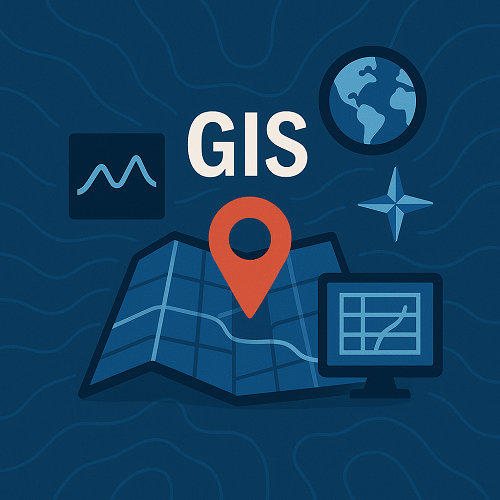7 Breakthroughs in Geospatial Information System (GIS) Latest News: Insights You Can't Miss
Geospatial Information System (GIS) Latest News
Amidst an ever-evolving landscape of technological prowess, the latest advancements in the Geospatial Information System (GIS) sector have marked a paradigm shift in spatial data interpretation. With innovation at the forefront, the year 2025 unfolds promising possibilities in the realm of geospatial technologies.
Revolutionary Developments in GIS: Setting the Scene
Navigating through 2025, the surge of advancements in GIS demonstrates unparalleled expertise and ingenuity. Spearheading this revolution are groundbreaking developments that not only align with current technological trends but also redefine them.
A New Era in Airborne Bathymetric Mapping
In a notable development, the Leica CoastalMapper LiDAR sensor emerges as a pivotal tool, drastically enhancing the efficiency of airborne bathymetric mapping processes. By streamlining underwater terrain analysis in coastal areas, this sensor is pivotal for marine navigation, coastal management, and environmental monitoring.
The Core Functionality and Benefits
LiDAR technology, imbued with precision, enables comprehensive mapping of underwater landscapes. Its significance lies in accurate data capture that significantly improves coastal management strategies. These enhancements bolster flood prevention measures, hence protecting vulnerable coastal communities.
GMV and the Galileo HAS High Accuracy Service Data Generator
An auspicious move by GMV is the development of an upgraded Galileo HAS high accuracy service data generator. This advancement enriches the precision of navigation systems, leveraging Europe's GPS network with remarkable efficiency.
Impact on Navigation Systems
The high accuracy service incorporates various applications beyond conventional navigation systems. It impacts sectors like automotive, surveying, and telecommunications, making data-driven decisions more reliable and underscores an innovative approach to existing GPS technologies.
Astroscale Japan: Pioneering In-Space Refueling Technologies
Astroscale Japan, a titan in space technologies, has been at the helm of developing cutting-edge in-space refueling technologies. This transformational venture is not only a leap towards sustainable space operations but also paves the way for long-duration missions.
Implications for Space Exploration
In-space refueling significantly extends the lifespan of satellites and other orbital entities. Consequently, this minimizes space debris, which poses a continuous threat to space ecosystems. Such innovations are defining the future of space exploration and sustainability in orbit.
The 2024 GIS Program Workshop and Coastal Resilience
The 2024 GIS Program workshop embarked on a journey of exploring coastal resilience, emphasizing flood risk through geospatial storytelling. Leveraging GIS technology, the workshop unraveled narratives that highlighted key strategies in mitigating climatic impacts.
Applying Geospatial Storytelling
Geospatial storytelling plays an instrumental role in comprehending and effectively conveying the intricate details of climatic threats. The visualization of data elevates public awareness and facilitates evidence-based policy-making processes in coastal regions.
Influence of Geospatial Visualization on Storm Surge Understanding
Recent research published in The International Journal of Disaster Risk Reduction delves into how various facets of geospatial visualization affect the understanding of storm surges. From graphic interpretations to abstract mapping, these visual tools empower communities in disaster preparedness.
Effective Communication Through Visualization
Comprehensive visualization fosters informed decision-making and enhances community preparedness against natural calamities. Improved communication strategies bridge gaps between complex storm data and practical comprehension by local operatives and stakeholders.
Geospatial Information System (GIS) Latest News FAQs
What is the significance of the Leica CoastalMapper LiDAR sensor?
The Leica CoastalMapper LiDAR sensor is pivotal in faster, more accurate bathymetric mapping, significantly aiding in coastal management and environmental conservation.
How will GMV's new data generator affect navigation?
By enhancing the accuracy of positioning information, GMV's new data generator advances various applications, from automotive navigation to telecommunication tactics.
What are the expected outcomes of in-space refueling technologies?
In-space refueling technologies promise to extend satellite lifespan and minimize space debris, marking a significant step in sustainable space exploration.
Why is geospatial storytelling crucial for coastal resilience?
Geospatial storytelling fosters greater understanding by visualizing flood risks and enabling societies to develop effective resiliency strategies against climate threats.
What impact does geospatial visualization have on storm surge awareness?
By employing visual tools, geospatial visualization enhances community understanding and preparedness, thus improving disaster management efforts.
How is GIS impacting global environmental strategies?
GIS plays a pivotal role in environmental strategies by providing precise data, facilitating efficient resource management, and strengthening conservation efforts globally.
Conclusion: The Ever-Expanding Horizons of GIS
The Geospatial Information System (GIS) sector continually advances, ushering in transformative technologies that redefine spatial data usage. As we progress through 2025, these innovations expand opportunities for improved environmental management, navigation precision, and sustainable space practices, promising a future where ingenuity meets practicality.
